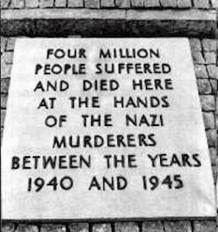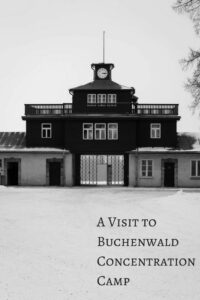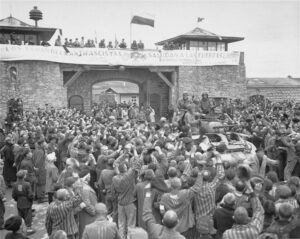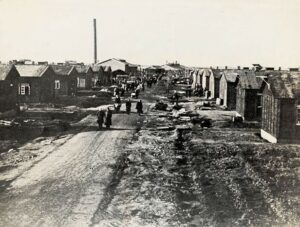A 100-year-old alleged retired warden at a Nazis concentration camp will undergo prosecution in Germany indicted of conspiracy in 3,518 homicides, prosecutors announced. The anonymous suspect was impeached for assisting in the homicide of captives at the Sachsenhausen camp near Berlin between 1942 and 1945.
His logical conspiracies consist of complicity in executions by blasting battalions and toxic fumes. On Monday prosecutors verified the man would be fit to stand trial in October.
Prosecutors explained that the man suffered a medical trial which, despite his progressive age, considered him healthy to arrive in the courtroom, for two-and-a-half hours per day.
Testimony of the man’s health to continue trial was initially noted by German newspaper Welt am Sonntag on Sunday. The journal cited one of the attorneys, Thomas Walther, as telling several complainants were “just as old as the accused and anticipate justice to be done”.
German media explain the prosecution is anticipated to be one of the final concerning offences committed during the Nazi period. The survivors and perpetrators are presently very aged. Roughly 200,000 people were incarcerated at the Sachsenhausen camp between 1936 and 1945.
Political adversaries, hostages of battle and victimized organizations were among those imprisoned there by the SS, Nazi Germany’s former security organisation. The Sachsenhausen museum explains that tens of thousands of hostages succumbed at the camp as a consequence of starvation, infection, forced labour, extermination systems and additional reasons.

Germany has been inciting abandoned Nazi camp employees since a landslide verdict in 2011 that sentenced a former warden, John Demjanjuk, as an accompaniment to mass homicides. He succumbed pending a plea, but the ruling set a legitimate precedent.
Formerly, tribunals had imposed proof of direct involvement in deaths. Although the number of suspects in Nazi scandals is declining, prosecutors are however striving to bring people to justice.
In July 2020, a 93-year-old retired concentration camp janitor was found guilty of conspiracy in the homicide of more than 5,000 captives. Nevertheless in March this year, prosecutors said a 96-year-old alleged retired camp caretaker was incapable to stand prosecution. What happened in the Sachsenhausen camps was a horror that existed from 1936 to 1945.

The Sachsenhausen concentration camp was created in the summer of 1936 by internees from the homes in the Emsland province. It was the early new concentration camp to be organized commemorating the nomination of Reich Leader SS Heinrich Himmler as the head of the German Police in July 1936. Scheduled on the bringing outboard of an SS engineer, it was developed as a perfect concentration camp providing architectural representation to the planet.
It was the symbol of the SS visions and aimed at subjecting the internees to the ultimate power of the SS both symbolically and in fact. As an ideal camp that was also utilized for acquainting SS patrols and as a concentration camp near the “Reich” capital town, Sachsenhausen concentration camp celebrated unique importance. This was underscored when in 1938 the “Inspection of the Concentration Camps”, the prominent executive department for all concentration camps in the provinces governed by Germany, was shifted from Berlin to Oranienburg.

More than 200,000 people were interns in Sachsenhausen concentration camp between 1936 and 1945. They comprised of political adversaries of the Nazi government, components of organizations announced by the Nazis to be racist or biologically unimportant, such as Jews, Sinti and Roma, and people victimized as homosexuals, as well as so-called “ career delinquents” and “antisocials”.
Originally, the internees were especially German residents, but after the attack of the Second World War, tens of thousands of people were expelled from the occupied territories to Sachsenhausen concentration camp, comprising of political oppositions of National Socialism or the collaborating administrations, foreign involuntary labourers and associated criminals of battle.
In 1944, around 90 % of the internees were foreigners, with residents of the Soviet Union and Poland shaping the biggest organizations. There were also roughly 20,000 women among the internees in the Sachsenhausen concentration camp.

Formerly, internees were threatened to function in workshops and plants acquired by the SS in the camp’s industrial property as well as in several penalty circumstances such as the “Klinkerwerk” (brickworks) or the “shoe running detail”. From the late summer of 1938 captives of Sachsenhausen concentration camp were pushed to create the planet’s enormous brickworks not distant from the Lehnitz lock near Oranienburg, to provide with construction materials for the gigantomastia techniques schemed by the Nazi administration in the “Reich” capital town, Berlin.

Every day the SS marched up to 2,000 people over the canal bridge to the Klinkerwerk brickworks before the gazes of the regional public. People referred to this camp as “death camp”, particularly as the SS utilized the Klinkerwerk for accomplishing conscious killings operations. When a barrack camp was constructed there in 1941, the Klinkerwerk earned the reputation of an autonomous satellite camp. From 1943 the SS utilized the location for creating munitions; shell cases were annealed in the Klinkerwerk’s kilns.

The “shoe operating detail” was established in 1940 and was under the power of city administrators from the “Reich” Ministry of Economics. It included a shoe testing road with numerous coverings which was laid out around the march turf and people had to trek on it for days on end with enormous bundles to experiment with the usefulness of several shoe sole fabrics. From 1942, more than 100 satellite elements and satellite camps were established in the course of the mass deployment of concentration camp people as obligatory workers in the armaments traffic.
Tens of thousands of people departed in Sachsenhausen concentration camp as an outcome of starvation, infection, forced labour, medical tests and injustice or were the patients of standardized extermination procedures by the SS. In the autumn of 1941, the SS massacred at least 13,000 Soviet criminals of battle, among whom several were Jews, in a purpose-built “neck shot unit” and testing of fume automobiles. Nearly six months later, at the beginning of 1942, an extermination department was assembled in the industrial property, with a crematorium and a neck shot battalion, with a gas chamber expanded in 1943. Analogously to Tower A, which was the corridor entrance, the SS cynically called this facility “Station Z”.

Some 80,000 people were imprisoned in Sachsenhausen concentration camp and its satellites at the outset of 1945, of whom 58,000 were in the Sachsenhausen central camp. When the Red Army entered the River Oder, the camp commandant, obeying the instructions of the top SS administration, ordered rehearsals to be prepared for vacating the camp. In February 1945 an SS special battalion led the way by Otto Moll massacred some 3,000 people who were deemed “dangerous”, who had martial coaching or had formerly been categorized as “unfit for marching”. At least 13,000 more people were sent to Mauthausen and Bergen-Belsen concentration camps.
The evacuation of the Sachsenhausen concentration camp started in the earlier hours of 21 April 1945. Thousands of interns departed on these Death Parades. On 22 April 1945, battalions of the Soviet and Polish armies evacuated approximately 3,000 weak people as well as nurses and physicians who had been abandoned behind in the camp. 300 of the camp’s retired inhabitants did not live their independence and expired there as an outcome of their imprisonment in the concentration camp.